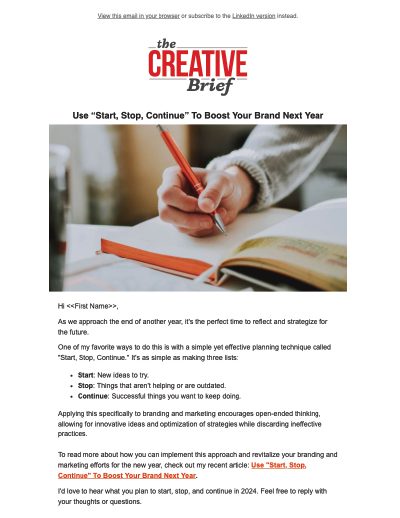Business owners are more in tune with the principals of branding than ever before, some spending millions of dollars to brand or rebrand, depending on where they’re at in the business lifecycle. A brand represents everything about an organization, from its market position to company culture.
When you think about some of the most iconic brands, such as Apple, Nike or Starbucks, one common thread can be found: all three were created over time, through consistent creative, advertising and experiences. To reach their level of success requires a multi-prong approach that combines creativity, planning and, when warranted, periodic evolution. Consistency may be the most vital component of brand management — it’s paramount to maintaining the customer’s viewpoint of a company and its products.
Keeping the core brand intact throughout evolutionary changes is a crucial component to brand consistency. While employees may come and go, company product offerings may change, and even logos get updated over time, the brand at its core should remain unaltered.
Brand consistency enables companies to drive customer perception and engagement from initial contact through the purchasing process. Prospects who understand a brand — including its evolution — are more likely to buy its products. Brand consistency also provides the trust that underpins marketing efforts.
So how can you maintain brand consistency? Here are four strategies that organizations of all sizes can adopt.
1. Make Consistency a Company-Wide Effort
Without a company culture that protects the brand, consistency is unlikely going to be sustained. Educating employees about company history and values and the stories behind its growth and success will encourage internal brand loyalty and inspire internal audiences to project a more professional image to prospects, customers and other stakeholders. Remember, everyone in your company represents your brand so they should also understand it and be able to explain it easily.
Hiring or assigning a brand manager can go a long way to protecting the brand and ensuring consistency. View the brand manager as the gatekeeper for all company products and services. They understand that a company communicates through a variety of channels and can establish policies for maintaining employee awareness of consistent branding practices.
2. Create – And Use – Brand Guidelines
The brand manager’s job is not only creating guidelines but documenting them in a brand guide that is distributed throughout the company and presented to new employees. Your company’s character, personality, and identity should be documented in the brand guide. One easy way to keep a brand guide current is to create a digital brand portal that is kept evergreen. This online portal ensures everyone in the company has access to the current brand guidelines — and may include everything from logos, fonts, and colors to messaging and key visuals.
Review the brand guide on a consistent basis. Inspect and alter it with your company’s core brand messaging and image in mind. This guide should provide clarity to everyone and show the values they should project and uphold. It’s much easier to maintain consistency in branding if teams across the company can easily find guidelines for creating company materials.
3. Facilitate Steady Brand Evolution
A brand manager usually tackles the challenge of overseeing steady brand evolution while still maintaining consistency. As the needs of the market change, so will your company and its products. The brand can’t remain static — it must remain relevant amid changing trends and shifts in the market.
Remember, the core brand doesn’t change all the time, but there are times when creative elements around it do, such as logos, color schemes, and taglines. Therefore, keeping staff in sync is key to your branding efforts.
4. Using Technology to Support Brand Management and Consistency
While brand management is an “all hands on deck” exercise, when used correctly, technology can simplify the brand management process and support the effort to maintain consistency. The right solution can enforce organization-wide branding guidelines without the continual memos or emails that employees may never open. Your guidelines can be easily updated with the most relevant images and content so that departments across the organization are adhering to brand policies.
While some companies may use Dropbox, Box, Google Drive or another cloud file storage system for brand management functions, these lack the necessary controls. Once organizations realize they can’t correctly manage growing asset libraries, they usually move on to a more advanced brand management solution like Digital Asset Management (DAM).
DAM allows organizations and marketers to easily store a full range of digital assets including images, videos, presentations, logos, design files, documents and more with metadata tagging for better search and share capabilities. Some DAM systems include brand guide features that keep everything accessible from one place.
Consistency Is Key for the Long Run
It’s no secret that a lot goes into creating and maintaining a brand. Those business owners and marketers that adhere to the principles of consistency over the long haul will realize the most rewards.




